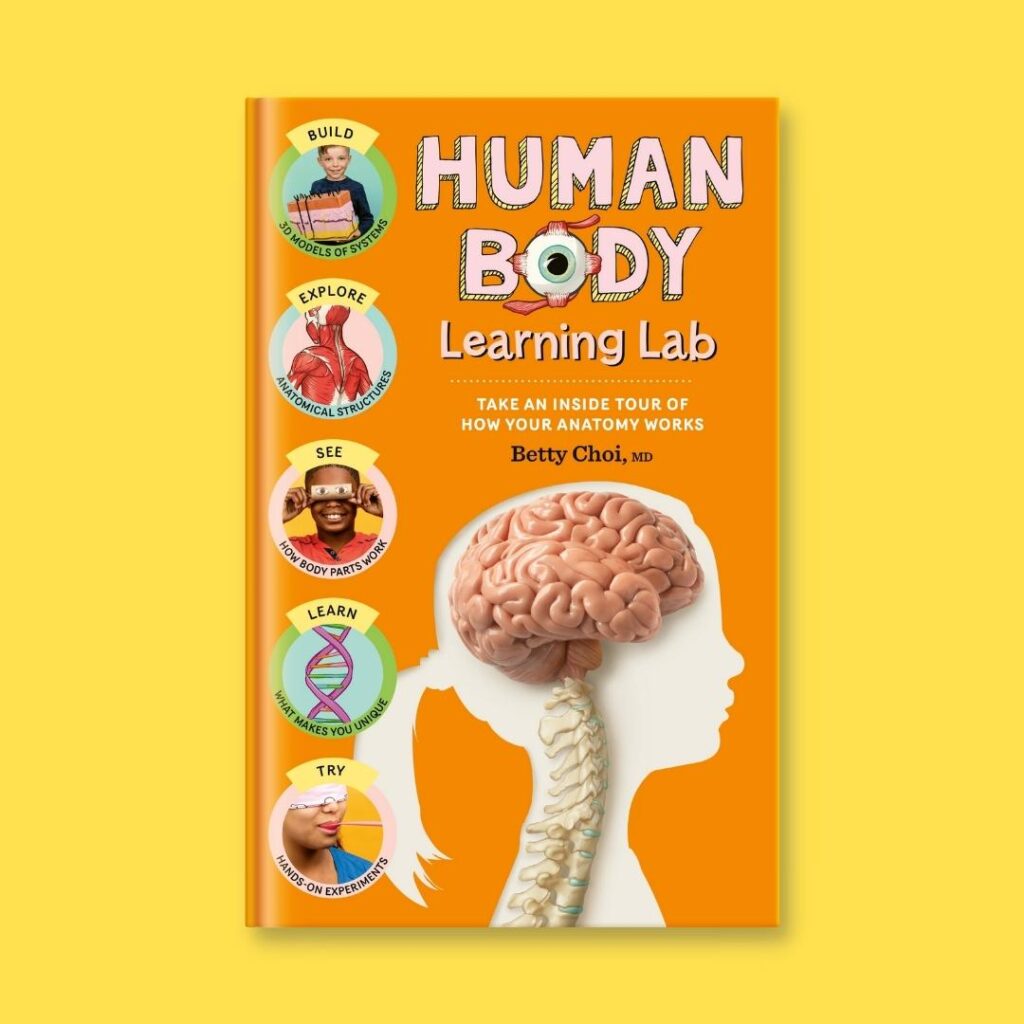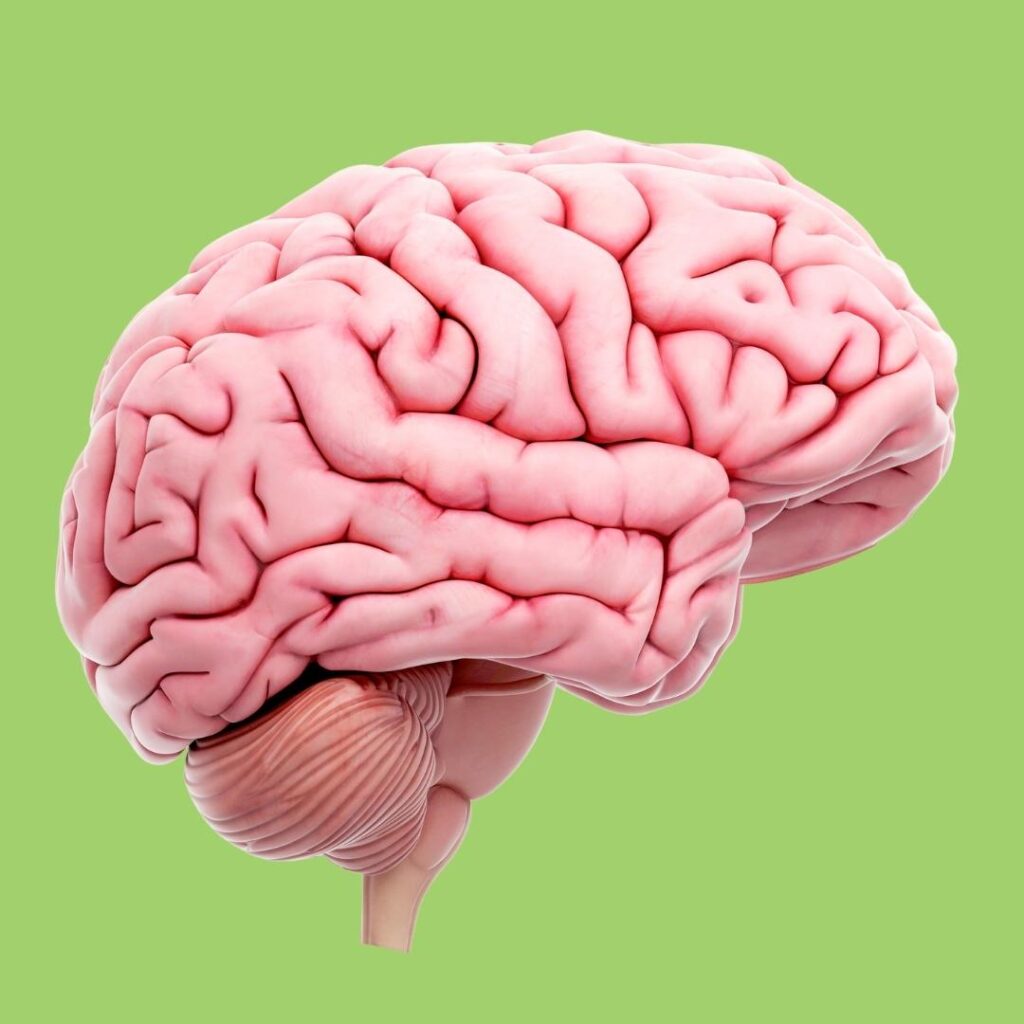Parts of a Cell: Learn Anatomy With a Fun Pizza Activity!
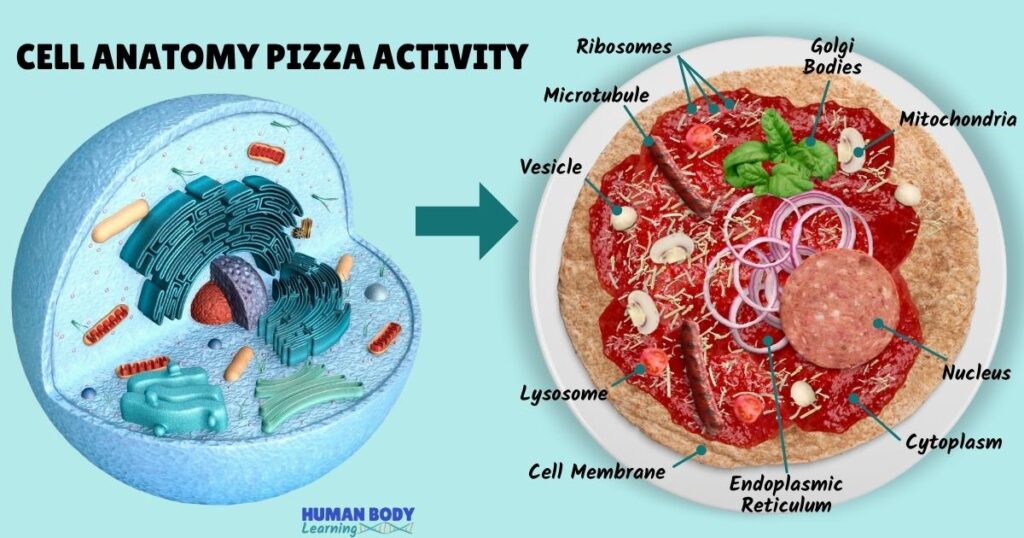
The cell is the smallest living unit of your body, but you can take a close-up look at it today! All parts of the cell have important jobs, but they also work together. With a fun and simple pizza-making activity, we can learn all about cell anatomy.
Learn all about the parts of a cell with pizza!
You can find ingredients shaped like parts of a real human cell with food from your home.
This might be the most delicious way to learn about your cells.
Safety first! Remember to double-check ingredients and avoid any food allergies.
Ingredients for cell pizza anatomy activity
Just like your body, your cells have little organs that work together. These mini organs are called organelles.
Here are some ingredients that are similar to the shape of cell organelles.
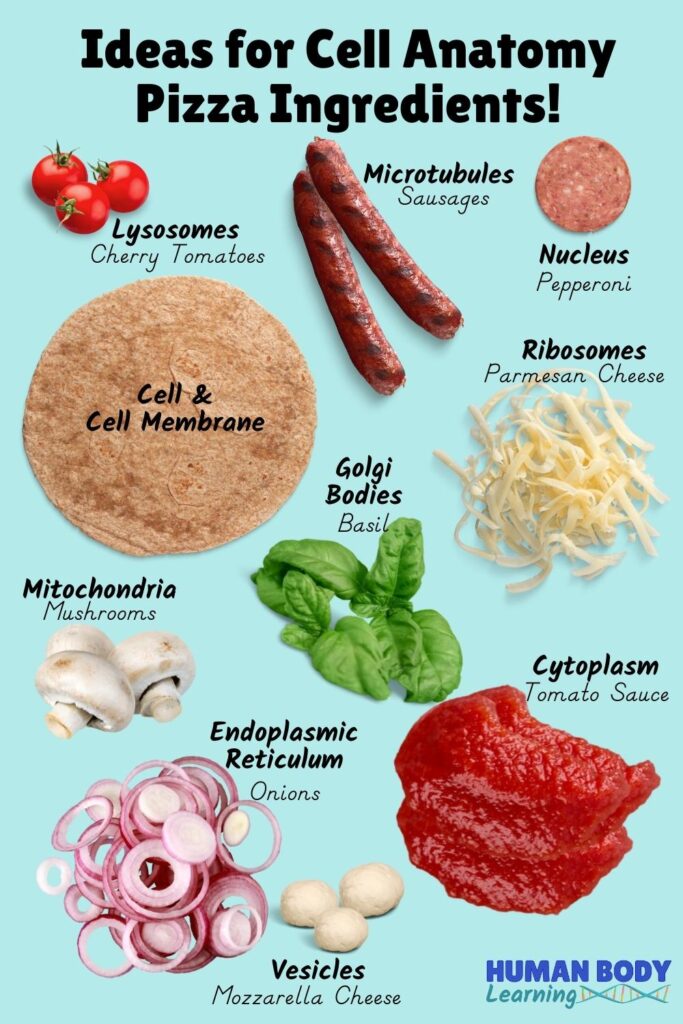
If you have any dietary restrictions, replace the examples from this cell anatomy pizza recipe with something you can safely eat. For example, if you have a food allergy, you can use vegan cheese instead of dairy cheese.
Now, it’s time to get creative and prepare the recipe. Then, fill up your brain and belly with tasty anatomy facts!
How to make a cell anatomy pizza model in 10 steps
Follow these steps to make a cell pizza while learning how the parts of a cell work. As you add each ingredient, imagine the cell as a little city with busy organelle workers everywhere!
Step 1: Set up the pizza cell
Put the tortilla, dough, or your favorite round pizza base on a large dinner plate. Leave space for a pizza crust around the edges; this will be the cell membrane.
In the human cell, the cell membrane acts like a gate. Energy and nutrients can pass the cell membrane into the cell while waste products are removed.
Step 2: Spread the cytoplasm
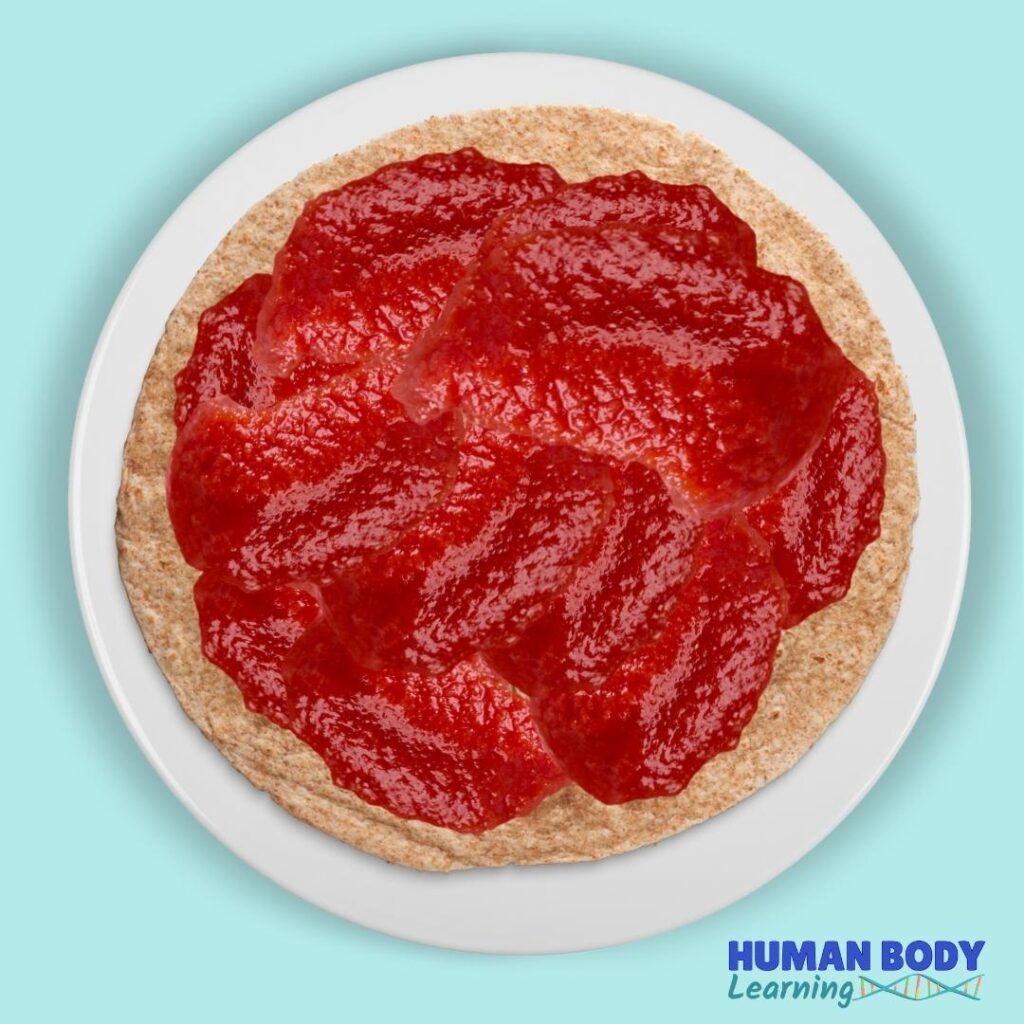
In a real human cell, the cytoplasm is a clear, jelly-like liquid that fills up the inside of a cell. Cytoplasm is mainly made of water, and all organelles float in it.
Now, it’s time to prepare the cytoplasm. Spread tomato sauce around the pizza cell to create cytoplasm.
Step 3: Add the nucleus
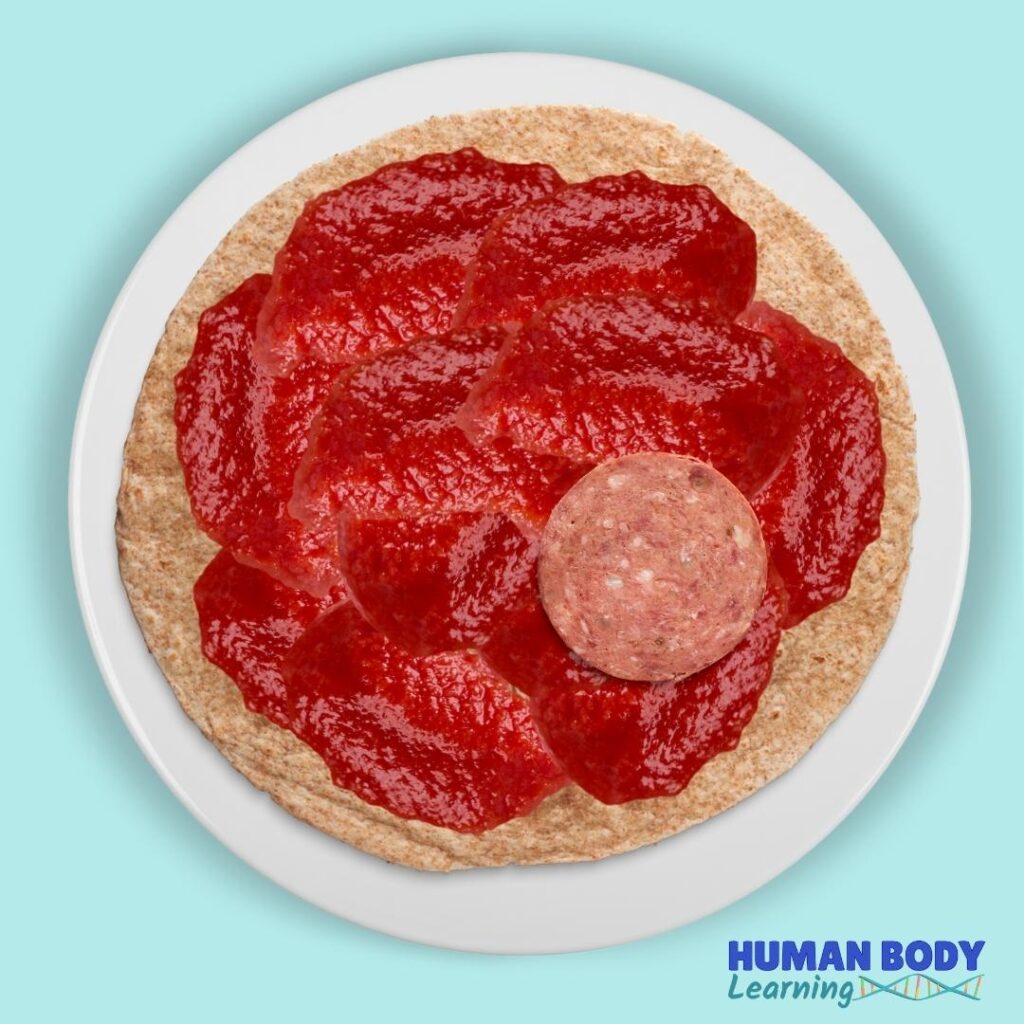
The nucleus is your cell’s boss, and it contains most of your cell’s DNA and chromosomes. The nucleus is in charge of all the activities in the cell. It also decides whether the cell should grow, divide, or die.
Put a large piece of pepperoni or salami toward the middle of the cell. This is the nucleus.
Feel free to use your imagination and extra ingredients for the DNA molecules! (Not pictured here.)
Step 4: Add the endoplasmic reticulum
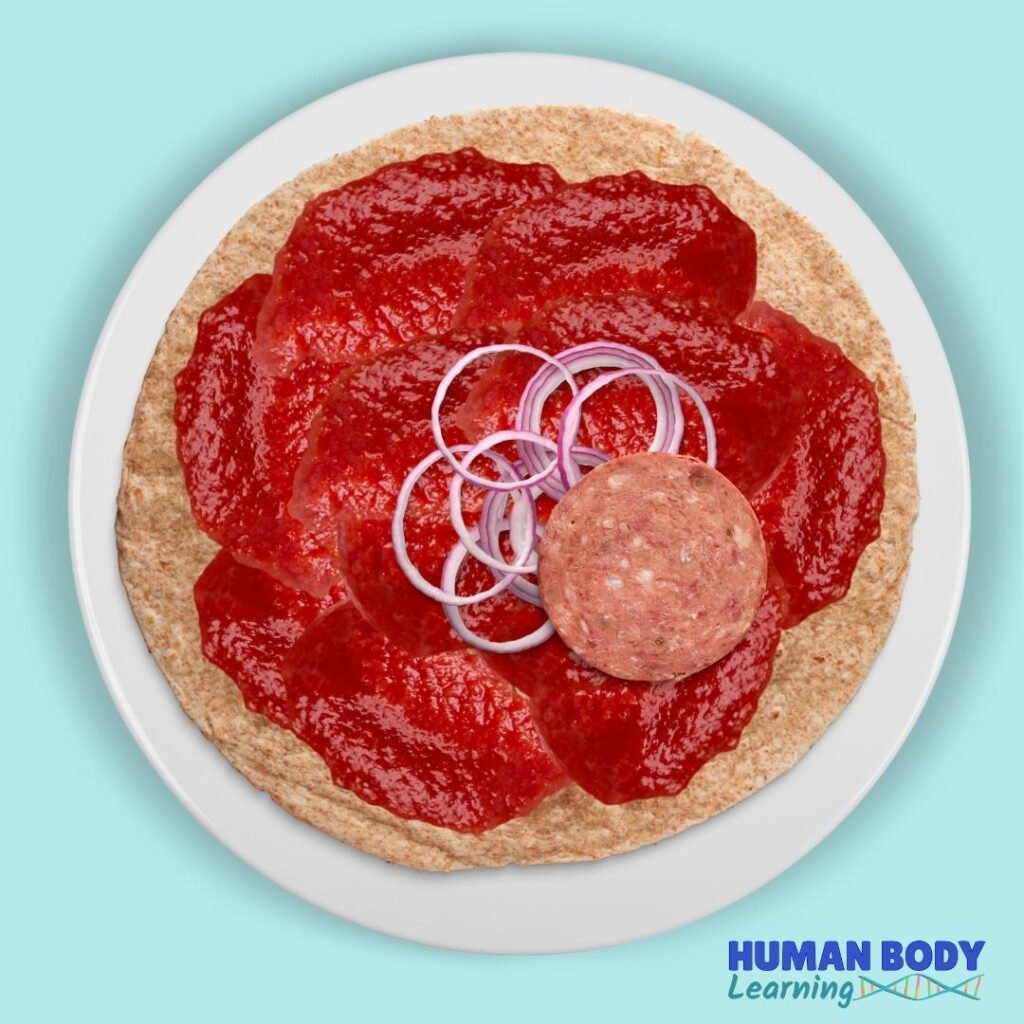
Next to the nucleus is a network of tubules called the endoplasmic reticulum – the onions on this pizza. Humans have two types of endoplasmic reticulum with different jobs: rough and smooth.
Cells that make a lot of protein have a lot of rough endoplasmic reticulum. Cells that make a lot of fat have lots of smooth endoplasmic reticulum.
| ROUGH ENDOPLASMIC RETICULUM | SMOOTH ENDOPLASMIC RETICULUM |
|---|---|
| Covered in ribosomes | No ribosomes |
| Makes lots of protein | Makes lots of fat or breaks things down |
| Pancreas cells make proteins like insulin; white blood cells make antibodies. | Ovary cells and testicle cells make steroid hormones. |
Step 5: Add the Golgi body
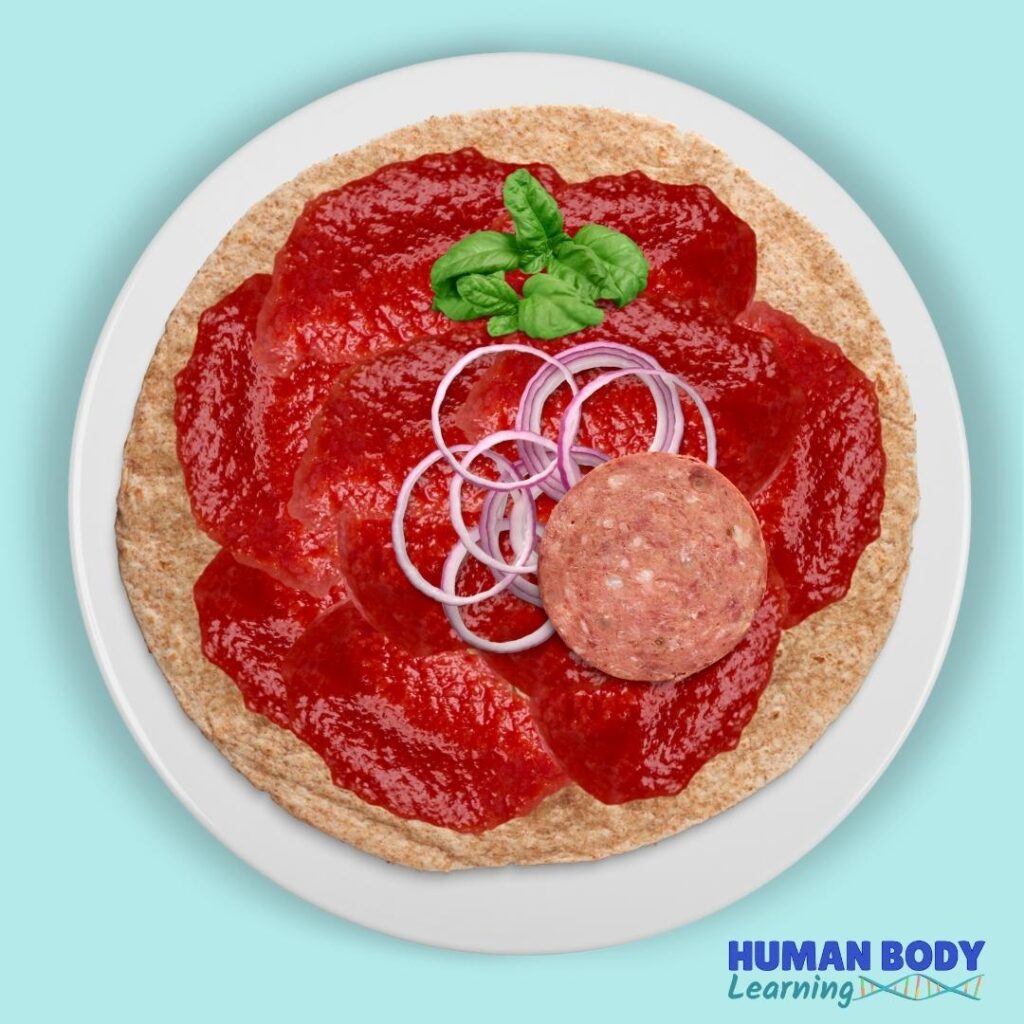
Let’s move on to the endoplasmic reticulum’s neighbor! The Golgi body is sometimes called the Golgi apparatus or Golgi complex.
This organelle acts like a factory. It processes proteins and packages them into vesicles. The Golgi bodies also make lysosomes.
Whew! The Golgi bodies sure are busy! Garnish the pizza with basil leaves to represent the Golgi body.
Step 6: Sprinkle ribosomes everywhere
In your cell, the little round ribosomes make proteins for the cell to work.
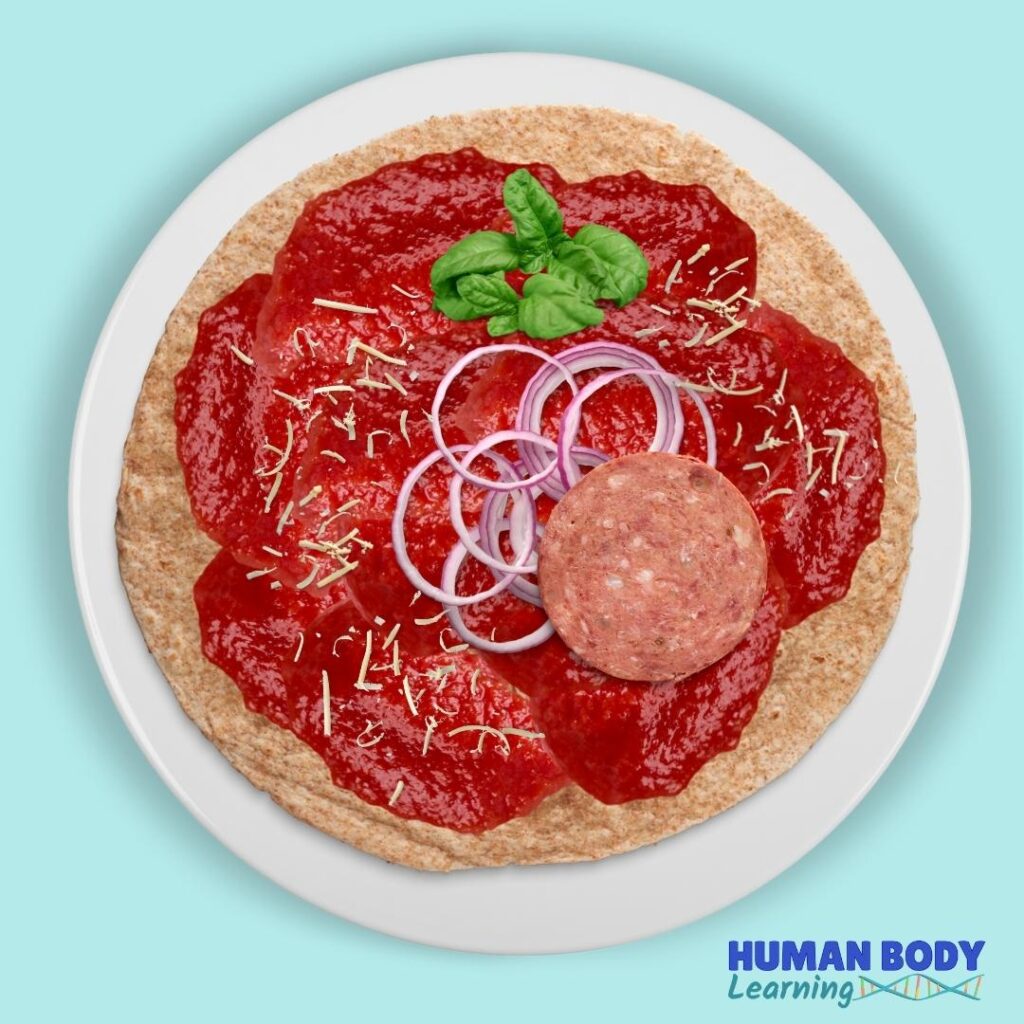
Each human cell has lots of ribosomes scattered throughout the cytoplasm. Ribosomes are also attached to the rough endoplasmic reticulum.
Cover your pizza cell with bits of shredded parmesan cheese or vegan cheese. Capers would also make great ribosomes.
Can you think of other pizza toppings that are shaped like ribosomes?
Step 7. Add vesicles
After leaving the Golgi body, it’s time for vesicles to get to work!

The human cell has a few types of vesicles:
- Transport vesicles carry protein and other materials to different parts of the cell.
- Secretory vesicles take materials out of the cell. For example, the nerve cell has special secretory vesicles that release chemical messages called neurotransmitters outside the cell. Nerve cells use neurotransmitters to talk to each other!
Add something small and round to your pizza, like mozzarella cheese balls, to represent different vesicles.
Step 8: Add lysosomes
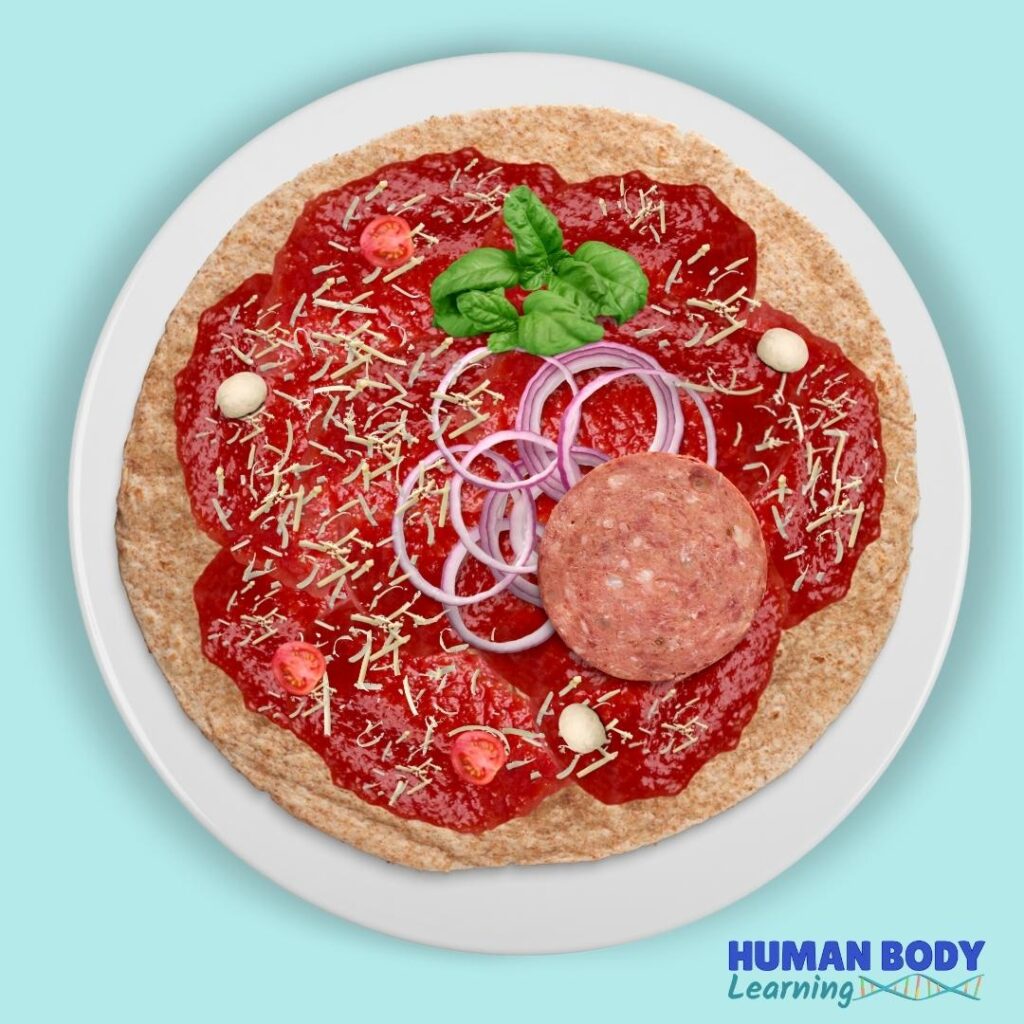
Clean-up time! Lysosomes are a special type of vesicle that acts like garbage-collectors. Their job is to pick up waste and get rid of it. Lysosomes also break down cells that are ready to die.
Can you think of another food that is small and round? Cherry tomatoes can be the lysosomes of your pizza cell.
Step 9: Add microtubules
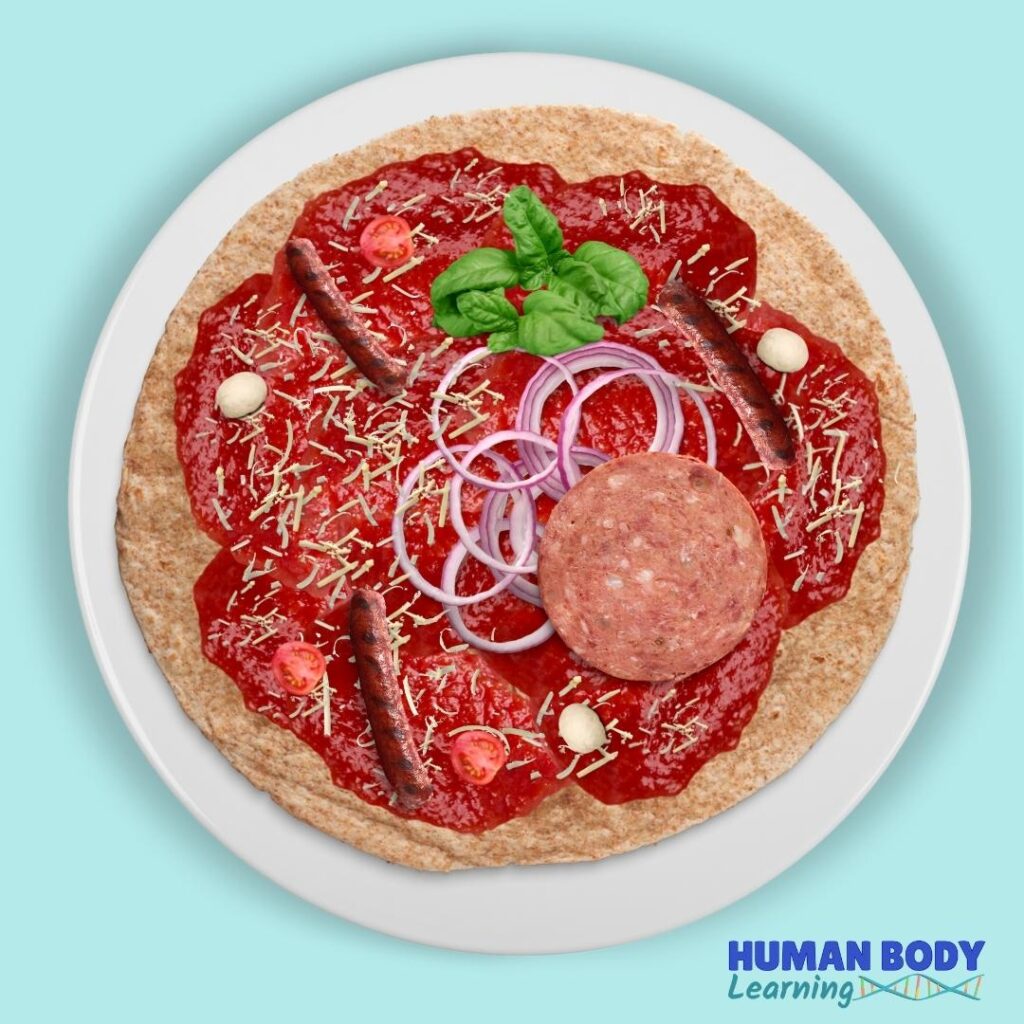
Microtubules are stick-shaped organelles in the human cell. They have many important jobs:
- They give shape to each cell.
- They help certain cells move.
- They act like roads for vesicles and other organelles to travel along.
- They help a cell divide into two cells.
You can add sausages, hot peppers, or other stick-shaped food to represent microtubules on your pizza cell.
Step 10. Add mitochondria
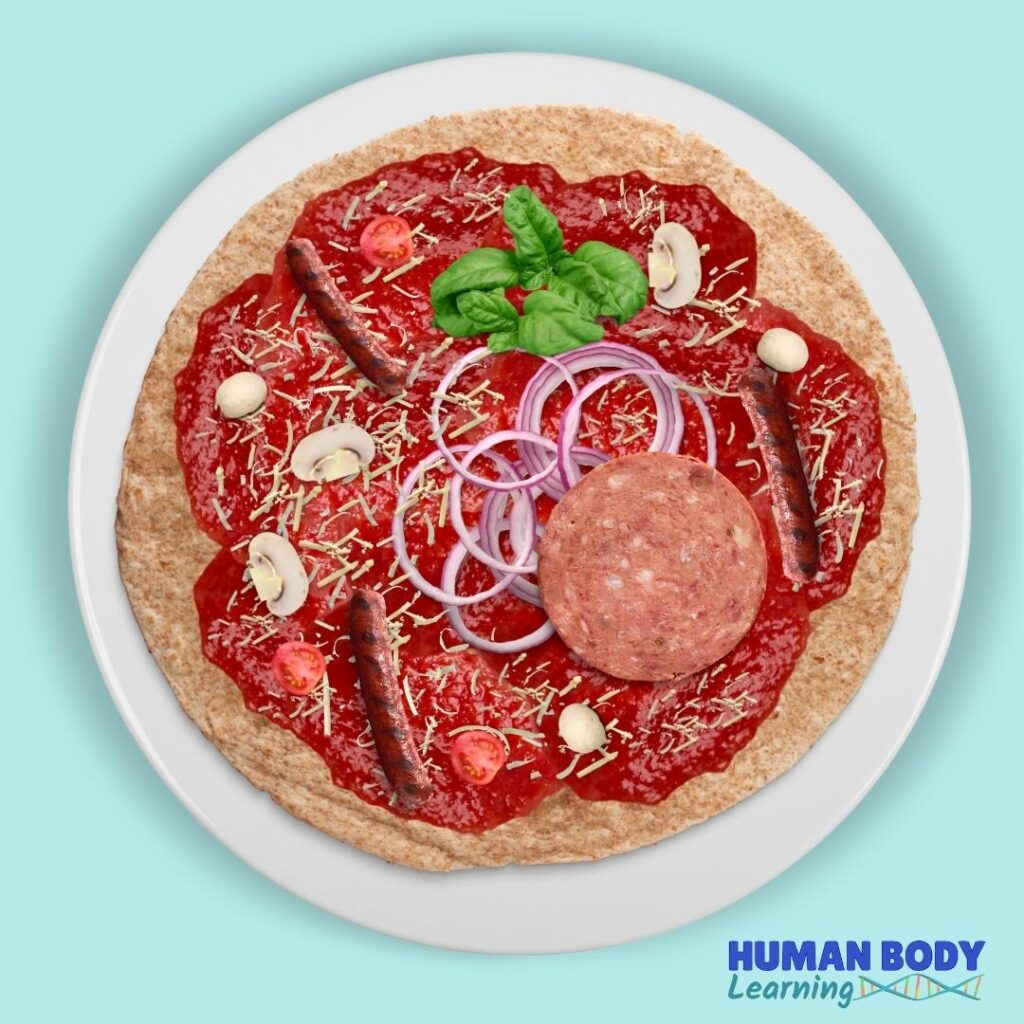
Last but not least, we have the mighty mitochondria!
Because the mitochondria’s job is to make energy, scientists usually call mitochondria the “powerhouse of the cell.”
How do mitochondria make energy? By combining glucose with oxygen.
The amount of mitochondria a cell has depends on how much energy it needs. For example, muscle cells have tons of mitochondria.
Mitochondria have an oval shape – kind of like sliced mushrooms! Chop extra mushrooms if your cell needs more energy.

Bake and eat the DIY cell pizza model
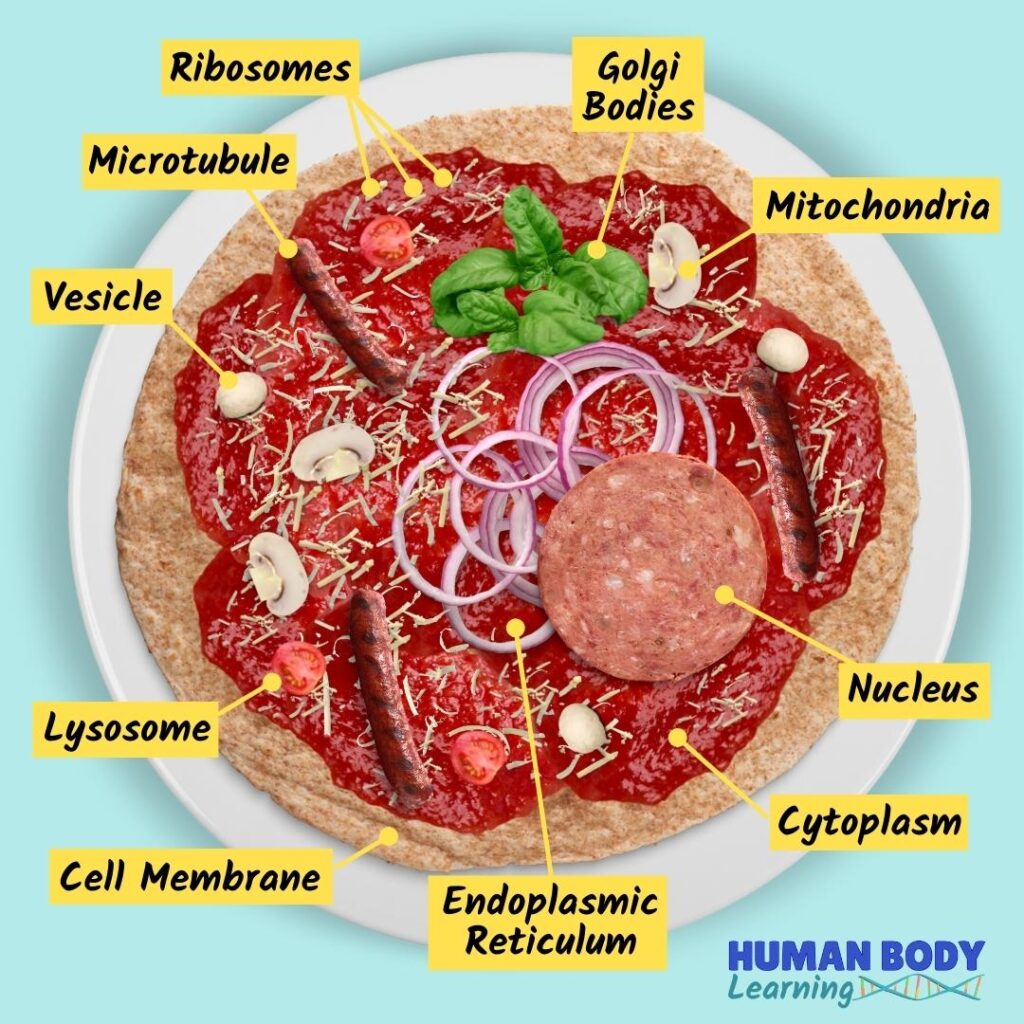
Now, you might be wondering how to cook the cell pizza. This depends on the instructions for the pizza crust, tortilla, pita bread, or other base you used.
For example, if you bought a pizza crust, follow the baking directions listed on the box.
After your cell pizza model is fully cooked, it’s time to devour your delicious science project!
More ways for kids to learn about their body
Published on March 23, 2022. Updated on January 18, 2024 by Betty Choi, MD
Published on March 23, 2022. Updated on January 18, 2024 by Betty Choi, MD

Betty Choi, MD
Dr. Betty Choi is a Harvard-trained pediatrician who makes learning fun and doable. She created the kids’ anatomy book Human Body Learning Lab, which Science Magazine recommended as a “notable standout in the genre.”

